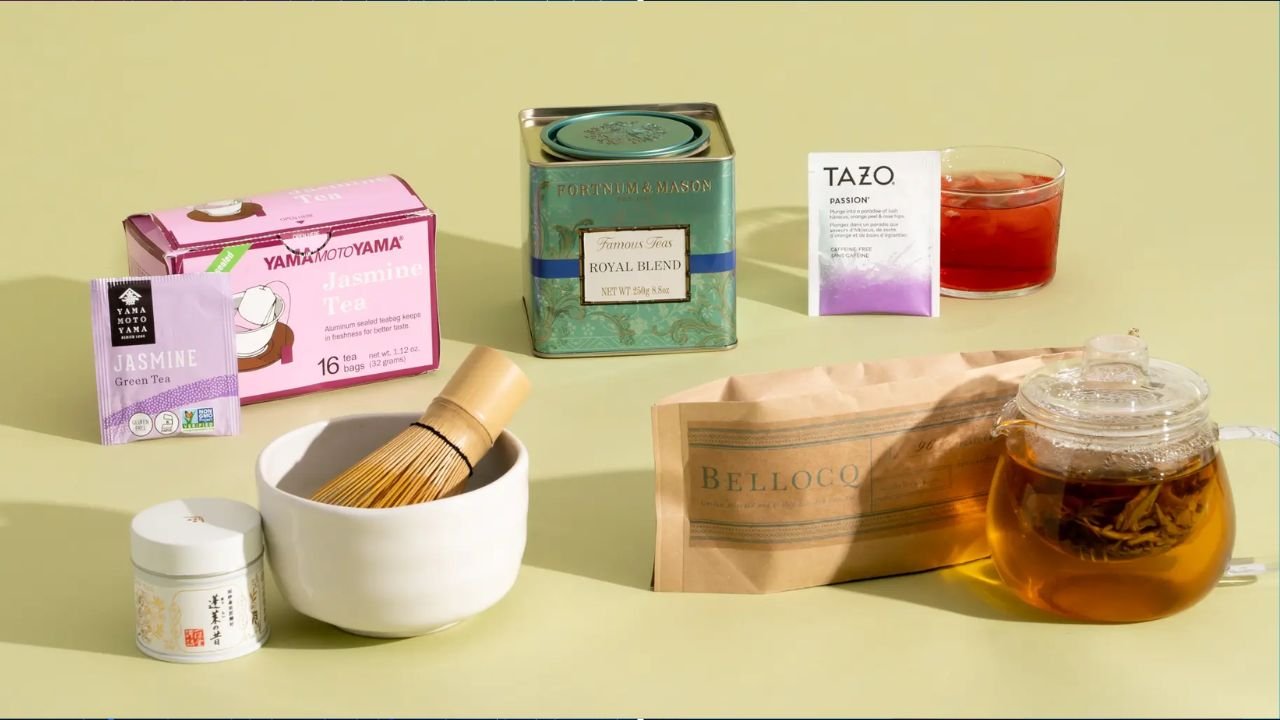Being a multipurpose beverage, tea is cherished across the world and valued among people for its wide range of uses and traditions. From ancient ceremonies to contemporary kitchen activities, it still holds a place, bridging cultures and eras.
The reason for its sustenance or popularity lies in its soothing effect and diverse flavors. Each type of tea is bestowed with distinct qualities and tastes. Some are bold and earthy, like black or oolong tea. Others are light and floral, such as green or white tea.
But what makes a tea special and remarkable altogether is its aroma, taste, and appearance. Some teas stir you up, and some calm your senses. On the other hand, many are consumed for their medicinal properties.
As tastes evolve, some flavors find ageless appeal to be put forth by different lands and regions. Likewise, this article explores five of the most popular tea flavors, highlighting their qualities and what makes them special.
To explore it, continue reading the article.
What Influences the Taste of Tea
Tea flavors depend upon elements such as origin, leaf variety, fermentation, and preparation. Ingredients like dried flowers, herbs, spices, and fruits are often combined, which gives a tea its distinctive blends and complex flavor.
Consequently, flavor complexity is a key reason why the most popular tea flavors continue to captivate tea drinkers worldwide. Brewing techniques and fermentation processes are the other two factors that further influence the final taste and aroma of the tea.
That said, besides the taste of tea, one other standout charm each tea holds is its distinct visual appeal. From light hues of green, dark red, and cobalt blues to golden shades, each color of the tea is a result of the ingredients involved and the level of oxidation it undergoes.
Altogether, from taste to the visual appeal and the making process, each factors make the tea worthwhile, creating a lasting impact and making it one of the cherished beverages across the globe.
5 Types of Popular Tea Flavors
The following highlights five popular tea flavors that are widely renowned and debunk what makes them truly irreplaceable!
1. Black Tea- Bold, Robust, and Universally Loved
Considered among the most consumed teas in the world, black tea is fully oxidized, resulting in a deep color and strong flavor that richly fills a palate. Popular blends include English Breakfast and Darjeeling.
It can be prepared with a bit of milk, sugar, or lemon. As it has a higher caffeine content than other teas, it gives a steady energy kick.
Taste profiles vary from malty and brisk to floral or smoky. But beyond its taste, other reasons why black tea is embraced all over the globe are due to cultural roots in countries such as India, China, and the UK.
Hence, whether for ceremony or for everyday use, black tea remains one of the most sought-after flavors globally.
2. Green Tea- Refreshing, Light, and Antioxidant-Rich
Green tea is known for its light taste and health-promoting properties. The leaves are minimally oxidized, retaining a fresh, grassy flavor.
Japanese matcha and sencha offer bold profiles, while Chinese green teas are often smoother. Many people choose green tea for its antioxidants, particularly catechins. These are linked to heart health and metabolism.
Its low caffeine and calming effect make it a daily favorite. It is also versatile, enjoyed hot, iced, or blended. As interest in wellness grows, green tea remains a favored choice for those seeking both taste and function.
3. Herbal Teas- Caffeine-Free and Naturally Flavorful
Herbal teas are made from herbs, flowers, fruits, or spices, not traditional tea leaves. They are naturally caffeine-free, making them suitable for evening use or caffeine-sensitive drinkers.
Popular choices include chamomile, peppermint, rooibos, and hibiscus. Each offers a distinct flavor- floral, minty, tart, or earthy. Herbal teas are often chosen for their calming effects or digestive support.
They are also widely appreciated for their vivid colors and aroma. Available in countless combinations, they offer flexibility for flavor preferences and wellness goals. Their natural sweetness and smooth finish make herbal blends widely appreciated across all age groups.
4. Oolong Tea- A Complex Bridge Between Green and Black
Oolong tea is partially oxidized, creating a flavor that sits between green and black tea. Its taste ranges from light and floral to roasted and nutty. Originating in China and Taiwan, oolong is prized for its depth and evolving profile with each step.
As the leaves unfurl, they release different notes, offering a layered experience. Many choose oolong for its digestive comfort and gentle energy. It is often consumed after meals.
The craftsmanship behind oolong contributes to its cultural significance. Its complexity, aroma, and adaptability make it a favorite among experienced tea drinkers.
5. White Tea- Delicate, Subtle, and Naturally Sweet
White tea is the least processed tea, made from young leaves or buds that are simply dried. It brews into a pale, clear liquid with a light, sweet flavor and floral aroma.
Silver Needle and White Peony are two of the most well-known varieties. Its low caffeine content and antioxidant properties make it a preferred choice for those seeking a mild and health-conscious drink.
White tea’s subtlety appeals to individuals who enjoy gentle flavors without bitterness. Though less common than black or green tea, its natural sweetness and calming qualities make it a sought-after choice today.
Bottomline
Tea remains a classic drink, prized for its rich cultural heritage and diverse flavors. From robust black teas to scented white infusions, there is a distinct sensory profile within each type, sculpted by source, process, and tradition.
Their long-lasting popularity rest as much on their flavor as on the comfort and familiarity they evoke. As tastes across the world are changing and evolving, the favorite teas do not alter in their likability.
They offer both fresh discovery and daily use, and therefore tea is a universal favorite in every way.



